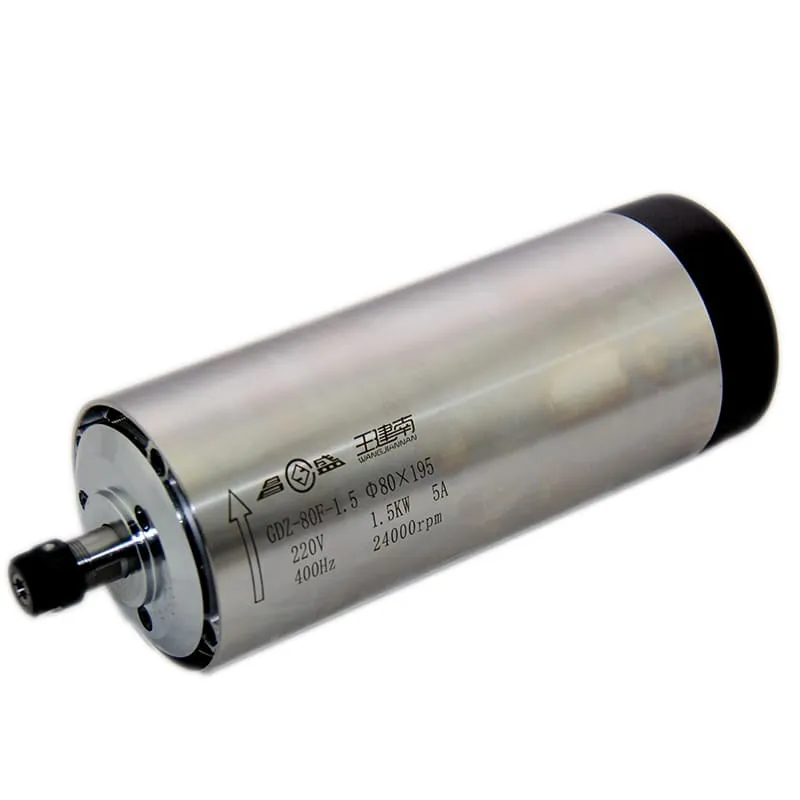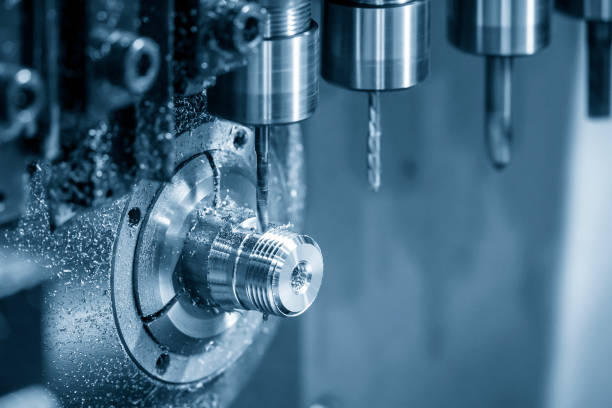CNC woodworking machines have revolutionized the way we create and craft wood products. Whether you’re a professional woodworker, a hobbyist, or someone simply interested in starting with CNC machines, this guide will take you through everything you need to know about using a CNC machine for woodworking. From understanding the different components to operating the machine with efficiency, you will find valuable information on all aspects of CNC woodworking.
Understanding CNC Machines for Woodworking
A CNC (Computer Numerical Control) machine is a tool that can automatically carve, cut, or shape wood using pre-programmed software. With the ability to create intricate designs, precision parts, and repeatable projects, CNC routers are ideal for a wide range of woodworking tasks.
What Makes CNC Machines Ideal for Woodworking?
- Precision and Accuracy: CNC machines are controlled by a computer, which allows for precise cutting and milling. You can achieve high accuracy with consistency, ensuring every piece is identical.
- Versatility: With the right tools and settings, a CNC machine can handle various types of woodworking, such as cutting, carving, drilling, and engraving.
- Efficiency: CNC machines are faster and more efficient compared to traditional manual methods, allowing you to save time on large projects.
If you want to learn more about the different types of CNC spindles that make this possible, check out our CNC Spindles page.
Tools and Components Needed for CNC Woodworking
Before you begin any woodworking project, it’s essential to understand the tools and components involved in CNC machining.
Key Components of a CNC Machine
| Component | Function |
|---|---|
| Router Bit | A cutting tool used for engraving and shaping |
| End Mill | Similar to router bits, used for milling |
| Stepper Motor | Drives the movement of the CNC axes |
| Controller Board | Controls the CNC router’s functions |
| Table | The base on which the workpiece is placed |
| Spindle Motor | Rotates the cutting tool for machining |
For details about CNC spindles, visit our CNC Router Spindles page.
Step-by-Step Process of Using a CNC Machine for Woodworking
1. Preparing the Workpiece
The first step is to prepare the wood you will be working on. Make sure it’s clean, flat, and properly secured on the CNC table.
- Step 1: Choose the right type of wood based on your project requirements. Hardwoods like oak and maple are suitable for detailed carvings, while softwoods are better for simple projects.
- Step 2: Secure the wood firmly to the CNC table using clamps or vacuum fixtures. Proper alignment is crucial for precision.
Tip: For complex jobs, always measure twice to ensure that the workpiece is centered on the table to avoid any mistakes.
2. Choosing the Right CNC Router Bit
Different router bits are used for different operations, such as cutting, engraving, and pocketing.
- Straight Bits: Ideal for making straight cuts.
- V-Groove Bits: Useful for carving letters and decorative patterns.
- Ball Nose Bits: Great for 3D profiling and intricate designs.
Selecting the right bit can make a difference in the quality of your work. It’s also important to maintain sharp bits to reduce friction and ensure clean cuts.
3. Designing with CAD/CAM Software
CAD (Computer-Aided Design) software allows you to create or import a design for your CNC project.
- Create a Design: Use software like Fusion 360 or Inkscape to design your project.
- Convert to G-Code: The CAD file is converted into G-Code, which contains the instructions that the CNC router will follow.
- Adjust Parameters: Set the cutting speed, feed rate, and other parameters to match the wood type and tool you’re using.
4. Loading the G-Code to the Machine
Once you have your G-Code ready, you need to load it into the CNC machine.
- Control Software: Programs like Mach3 or Candle are used to control the CNC router. Load the G-Code and preview the toolpath.
- Position the Router: Use the control panel to position the router at the start point. Ensure that the tool is above the workpiece to prevent unnecessary damage.
5. Cutting the Wood
Now, you’re ready to start cutting.
- Start the Spindle: Activate the spindle motor. Make sure it reaches the correct RPM for the tool and material you are using.
- Begin the Operation: Hit the start button, and the CNC router will begin to cut according to the G-Code instructions.
Quote: “The secret to precision in CNC woodworking is finding the perfect balance between speed and feed rate. Getting this right will ensure a clean and flawless finish every time.” – CNC Expert, John Walker.
Advanced Techniques for CNC Woodworking
1. Engraving and Carving Intricate Patterns
CNC machines are perfect for creating intricate carvings that would be difficult or impossible by hand. By using V-Groove and ball nose bits, you can create detailed, decorative carvings on your wood projects.
- 3D Carving: By layering different cuts and adjusting the depth, you can create stunning 3D carved designs.
- Sign Making: Use your CNC machine to make customized signs for personal or commercial use.
2. Pocketing
Pocketing refers to cutting out a recessed area in the wood. This is commonly used in furniture making for inlays and joints.
- Select the Right Tool: A flat end mill is the most suitable tool for pocketing operations. This will give you a smooth and consistent finish.
- Layered Cuts: Instead of cutting the entire pocket in one go, make layered cuts to gradually remove the material, reducing strain on the machine and tool.
3. Creating Joinery
With a CNC router, you can create highly precise joints like dovetails, mortise and tenon, and box joints.
- Accuracy: CNC joinery ensures perfect alignment every time, which is especially useful for cabinet making.
- Repeatability: Once you have a good template, you can easily replicate parts, making CNC woodworking ideal for mass production.
Recommended CNC Spindles for Woodworking Projects
For woodworking, it is essential to choose the correct spindle that suits your material type and the type of work you wish to perform.
- 2.2KW ER20 Air-Cooled Spindle
- 1.5KW ER11 Round Air-Cooled Spindle
- 60000RPM 1.2KW ER11 Water-Cooled Spindle

Common Issues in CNC Woodworking and How to Solve Them
1. Poor Surface Finish
A rough surface finish may occur due to several reasons, including a dull bit, incorrect speed, or unstable wood placement.
Solution: Replace dull bits, adjust the feed rate, and ensure that the workpiece is properly clamped to the CNC table.
2. Inaccurate Cuts
Inaccurate cuts are usually a result of incorrect calibration or mechanical issues.
Solution: Regularly calibrate your machine, check for backlash in the lead screws, and make sure that the router bit is securely tightened.
3. Burn Marks on Wood
Burn marks are a sign that the bit is rotating too slowly or that the feed rate is too low, which causes excessive friction.
Solution: Increase the router speed or adjust the feed rate to minimize contact time between the bit and the wood.
Frequently Asked Questions
1. Can a CNC machine cut all types of wood?
Yes, CNC machines can cut most types of wood, including hardwood, softwood, plywood, and MDF. The choice of spindle and router bit plays a crucial role in determining the quality of the cut.
2. How can I prevent wood tear-out?
To prevent tear-out, use a sharp tool, make sure the wood grain is oriented correctly, and adjust the feed rate. Using a backer board can also help.
3. What type of software is needed for CNC woodworking?
You will need CAD (Computer-Aided Design) software to create designs and CAM (Computer-Aided Manufacturing) software to generate G-Code. Popular options include Fusion 360, VCarve, and Inkscape.
4. How often should CNC router bits be replaced?
The frequency depends on how much the bit is used and the material it is used on. If you notice burn marks, excessive vibration, or rough edges, it may be time to replace the bit.
5. What safety precautions should I take when using a CNC machine?
Always wear safety glasses and hearing protection when operating a CNC machine. Make sure your workpiece is securely clamped, and never leave the machine unattended while it’s running.
6. Can I use a CNC router for metalworking?
Yes, a CNC router can work with some soft metals like aluminum, but you need to ensure that you have the appropriate spindle, cutting tool, and settings to handle the material properly.
Conclusion
Using a CNC machine for woodworking opens up a world of possibilities for both professional craftsmen and hobbyists. With the right tools, software, and knowledge, you can create precise, intricate designs that would be challenging to achieve with traditional methods. Whether you are cutting, engraving, or making joinery, a CNC machine helps you produce consistent, high-quality results with efficiency.
The journey from setting up your workpiece to completing a finished product is full of learning opportunities and rewards. Understanding how to operate the machine, choosing the right tools, and troubleshooting common issues are all integral parts of mastering CNC woodworking. By following the steps and guidelines in this guide, you’ll be well-equipped to take on a variety of woodworking projects with confidence.
If you are ready to explore CNC woodworking further, consider investing in high-quality CNC spindles and essential router bits, and don’t forget to continuously improve your skills by experimenting with different techniques. With patience and practice, CNC woodworking can become a fulfilling and creative endeavor that transforms your woodworking projects and takes them to the next level.
For more information on CNC machines, spindles, and woodworking tips, be sure to explore our other resources and internal links throughout this guide. If you need personalized advice or have questions about CNC spindles, feel free to contact us. Your journey into CNC woodworking mastery starts here!

